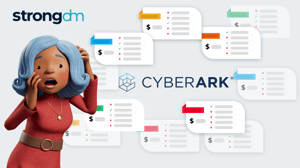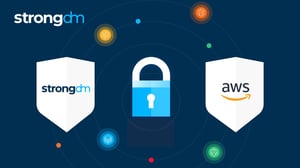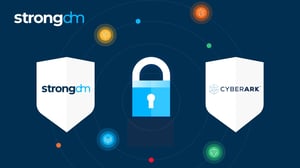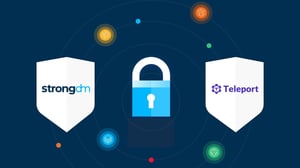CyberArk vs. Delinea (Thycotic & Centrify): Which Is Better?
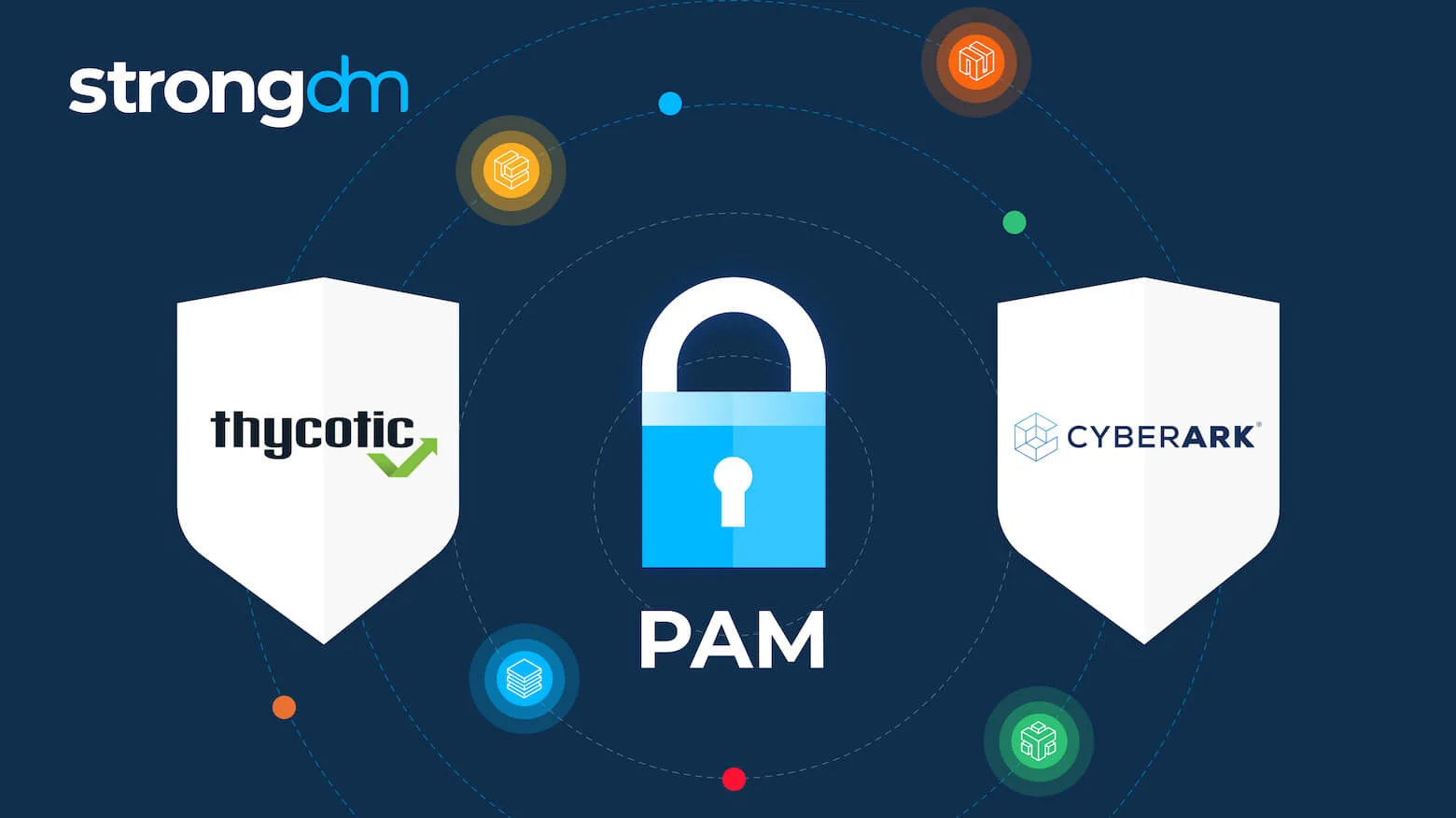

Written by
John MartinezLast updated on:
October 24, 2025Reading time:
Contents
Built for Security. Loved by Devs.
- Free Trial — No Credit Card Needed
- Full Access to All Features
- Trusted by the Fortune 100, early startups, and everyone in between
Summary: In this article, we’ll compare two Privileged Access Management (PAM) solutions: CyberArk vs. Delinea (Thycotic Centrify), with a closer look at what they are, how they work, and which will best fit your organization. We’ll explore product summaries, use cases, pros and cons, PAM features, and pricing to that by the end of this article, you’ll have a clearer understanding of how these PAM tools work and be able to choose the one that’s right for you.
With the growing rate of cybercrime, keeping your business and its valuable information safe is now more critical than ever. An effective Privileged Access Management (PAM) solution can help protect your organization from cyberattacks such as brute force, SQL injection, mishandling of sensitive information, and compliance risks.
Organizations need a reliable way to monitor and manage access to resources without disrupting productivity. So, CyberArk vs. Thycotic—which PAM solution is better? Let’s find out.
What is CyberArk?
CyberArk is an identity access management solution that enables organizations to protect, control, and manage privileged accounts and credentials in a cloud-based, on-premises, or hybrid environment. With CyberArk Privileged Access Management, you can manage information and assign security credentials for your applications and sensitive programs.
CyberArk Product Summary
CyberArk PAM provides database and server access to privileged users on engineering or IT teams. It contains features like a password vault and privileged access manager that allow companies to focus on protecting privileged accounts.
CyberArk Use Cases
CyberArk helps organizations:
- Secure privileged credentials in a vault
- Manage encryption keys
- Rotate credentials based on policies
- Monitor and record privileged sessions
- Control access to SSL/SSH certificates
- Manage third-party/remote access
CyberArk Pros & Cons
CyberArk may be a reliable choice for large enterprises, as it offers:
- Extensive product capabilities
- On-premises and cloud data deployment
- User analytics and reporting
- Threat detection
However, the tool can be difficult to implement. Challenges include:
- Complex installation requiring expert product knowledge
- Old-school graphical user interface (GUI) design that is hard to navigate
- Complex pricing model
- Limited support for modern databases
- Lack of support for Kubernetes and other containerized solutions
Learn more about CyberArk's competitors and alternatives.
⚠️ Traditional PAM deployments have gaps. Learn how to protect your databases, the cloud, Kubernetes, and more with our legacy PAM augmentation guide.
What is Delinea (Thycotic)?
Delinea (formerly known as ThycoticCentrify) helps companies prevent ransomware and security threats by managing administrative rights and enforcing least privilege access to privileged accounts.
Delinea Product Summary
Thycotic manages privileged user access to applications, servers, database management systems, and other resources through a centralized authentication process. This PAM tool provides password rotation and an encrypted secret vault to store keys and credentials.
Delinea Use Cases
Thycotic PAM helps organizations:
- Store secrets and credentials such as passwords and usernames
- Monitor server sessions
- Rotate passwords
- Log user activity
- Manage privileged access to networks, servers, applications, and databases
Delinea Pros & Cons
Delinea PAM is robust and flexible, providing efficient privileged access security through comprehensive audits and behavior analytics. Its benefits include:
- Straightforward secrets management
- Effective session management features
- Clear documentation
- User-friendly interface
However, Delinea falls short in modern computing environments. This PAM solution:
- Offers poor support for modern databases
- Requires installation on your server
- Does not support Kubernetes deployments
- Includes only limited third-party integrations
Learn more about Delinea's competitors and alternatives.
StrongDM: A Better Alternative to CyberArk and Delinea (Thycotic)
Traditional PAM solutions fall short when it comes to onboarding and offboarding, compliance, credential sharing, and tool integration. These tools have too narrow a scope, and their implementation, troubleshooting, and upgrading can be complex, requiring extensive product-specific training.
Furthermore, PAM tools can be difficult to implement without hindering productivity. Our recent Access-Productivity Report found that infrastructure access affects the productivity of 64% of companies. This means that unnecessary delay or access to the required resources wastes time and money.
StrongDM offers secure access that puts your people first. It moves beyond PAM to provide technical staff with role-based, attributed-based, and just-in-time access to the critical infrastructure they need to do their jobs.
StrongDM simplifies workflows and improves productivity while maintaining organizational security. It manages and audits access to resources using a zero-trust model, helping prevent the cyberattacks associated with unlimited and un-revoked privileges.
With straightforward pricing, custom tool integrations, and excellent customer support, StrongDM is an excellent choice for businesses of all sizes.
So, Which One Should You Choose?
Here’s a quick review of the key features to help you decide.
| CyberArk | Delinea | StrongDM | |
|---|---|---|---|
| Best for | Enterprises | Small to medium-sized businesses | Enterprises and start-ups looking to scale |
| Setup | Complex, requires product-specific expertise | Simple implementation | Simple, fast implementation |
| Navigation | Outdated GUI is difficult to navigate | Simple, user-friendly interface | Intuitive, user-friendly design |
| Modern database support | Limited | Limited | Broad support for legacy, modern, and cloud-based data sources |
| Kubernetes support | No | No | Yes |
| Installation | Requires product expertise. Must be installed on your server | Must be installed on your server | No installation required on your server |
| Documentation | Documentation is technical and overly complex | Good documentation | Excellent documentation |
| Customer support | Offers only limited support | Offers year-round support on premium packages only | Offers 24/7/365 support to all users |
| Pricing | CyberArk offers a 30-day free trial. The pricing model is complex, requiring a custom plan from the sales team. |
Thycotic offers a 30-day free trial. Requires a custom pricing plan from the sales team. |
StrongDM gives a 14-day free trial. It has a simple pricing model, including support for all resource types. |
Are you looking for a People-First way to manage privileged access? Book your demo of StrongDM today.
Next Steps
StrongDM unifies access management across databases, servers, clusters, and more—for IT, security, and DevOps teams.
- Learn how StrongDM works
- Book a personalized demo
- Start your free StrongDM trial


About the Author
John Martinez, Technical Evangelist, has had a long 30+ year career in systems engineering and architecture, but has spent the last 13+ years working on the Cloud, and specifically, Cloud Security. He's currently the Technical Evangelist at StrongDM, taking the message of Zero Trust Privileged Access Management (PAM) to the world. As a practitioner, he architected and created cloud automation, DevOps, and security and compliance solutions at Netflix and Adobe. He worked closely with customers at Evident.io, where he was telling the world about how cloud security should be done at conferences, meetups and customer sessions. Before coming to StrongDM, he lead an innovations and solutions team at Palo Alto Networks, working across many of the company's security products.
You May Also Like
